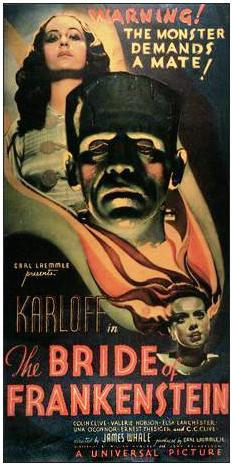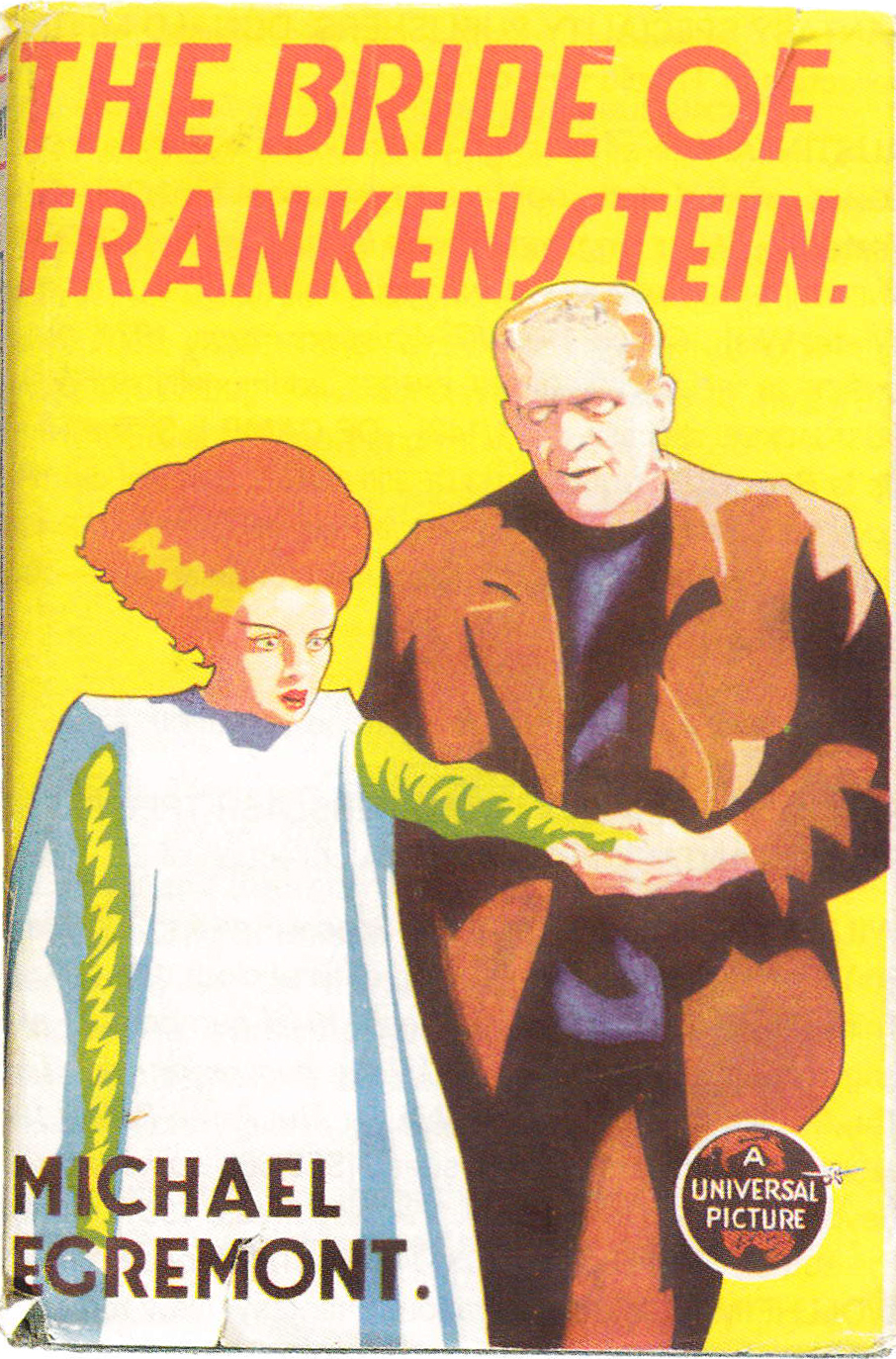



(1936, 1976)
Introduction by George Locke
One of the most famous of all pre-war horror movies was "Frankenstein," based on Mary Shelley’s famous novel and featuring Boris Karloff as the unhappy monster.
A considerable amount of trouble and expense had been involved in the preparation of the sets. After the movie had been completed, it was natural that the producers should want to make further use of them. As a result, a sequel, "The Bride of Frankenstein," was duly made and lurched its way across the silver screens.
It was the custom at that time to announce a movie as being based upon the appropriate book, and promote it accordingly. When "The Bride of Frankenstein" was finished, it was realised with some concern that there was no such book. Mary Shelley’s original work could not be credited for the sequel, so it was decided that an original novel would have to be prepared, and as a matter of considerable urgency.
The British "Readers Library," at that time (1936) owned by the Hutchinson group of publishers, produced the novel, by-lined Michael Egremont, in two formats. One, a sixpenny edition circulated in the main through the Woolworth chain of general stores, carried the Readers Library imprint. Although slightly larger in size and more substantial than the more familiar, earlier books in the series, it was still a cheap and nasty little thing on poor paper. Issued simultaneously was an edition for the libraries, in a superior format under the Queensway Press imprint, at three shillings and sixpence. At least two varieties of the Queensway Press edition exist, one bound in black cloth and the other in gray.
The author, the now well-known novelist Michael Harrison, recalls that the Readers Library informed him that the print runs were 350,000 for the sixpenny edition and 8o,000 for the library edition. However, he suspects that those figures should be taken with a pinch of salt.
Nir Harrison, at that time aged 28 and working on gossip columns for four of the Kemsley newspapers, had had two novels published by Arthur Barker (Weep for Lycidas and Spring in Tartarus), and had also written some material for the Amalgamated Press boys’ papers, including Sexton Blake and Nelson Lee stories. He was approached to write The Bride of Frankenstein through Tony Barratt, London representative of the Edinburgh printer R. & R. Clark, who printed Arthur Barker’s books and also did some work for Hutchinson. He had heard that the Readers Library, which produced a series of movie novelisations, were looking for somebody to write the Frankenstein piece from the shooting script, and had mentioned it to Gawen Egremont Brownrigg, an editor at Barker’s. He in turn had got in touch with Michael Harrison, and contact was made with the Readers Library.
Mr Harrison remembers being asked whether he could achieve the "gothic" style.
"How gothic?" For the original Frankenstein was rather heavy going for the modern reader.
It was decided that the required style was one that would seem to be gothic, yet be still quite readable. He was asked to write a few thousand words as a sample. Mr Harrison selected a part of the script in which the monster, pursued by villagers, takes refuge in a hut owned by a blind hermit, who befriends him. It subsequently formed the bulk of what would eventually appear as chapter 16 of the book.
The sample was duly read and approved, and a deadline of three weeks for the completion of the work agreed. During the writing, a small boy would arrive at Mr Harrison’s home at to am every day and scuttle off with the handwritten sheets of completed copy. Mr Harrison never saw any typescripts or proofs, and yet the book was produced with hardly any blemishes.
He worked from a shooting script, which included not only dialogue but details for the location of sets, camera positions, etc. The script was so tedious and confusing, Mr Harrison recalls, that after having struggled through the first six pages (and seeing a preview of the movie itself) he realised that it would be impossible, following the regular routine, to finish the task in three weeks. He therefore decided to ignore the script, though not, of course, the story. A "rubbishy bit at the end" and the opening scene were taken from the script, but the remaining work represented so radical a departure from the script that the finished book was to all intents and purposes original fiction.
It is unlikely that anybody noticed his departures from the script. The Bride of Frankenstein, a work of which he is far from proud, was intended to be an assembly-line novel for a fiction factory, and quality control would not have been very strict. Comparison of the book as published with Mr Harrison’s original manuscript shows very few changes indeed. The chances are that very few of the Readers Library staff would have read it, and certainly wouldn’t have troubled to collate Mr Harrison’s text with the script itself. If they did notice the departures, they certainly did nothing about it.
Not unnaturally, Michael Harrison didn’t want his own name to go on The Bride of Frankenstein, and the pseudonym of Michael Egremont came from a pretentiously-named public house in Worthing, called "The Egremont Arms" after an important local family. Although he is unable to recall the exact details, he also thinks that there was a link between the name Egremont and Mary Shelley herself.
Mr Harrison, who has published a large number of novels and other works of a more general nature over the past 40 years, is very well known in Sherlock Holmes circles as an erudite and learned scholar of the Great Detective. He made three excursions into the realm of science fiction after The Bride of Frankenstein. One, the 1945 Higher Things (Macdonald & Co), concerns a man who acquires the power of levitation. Another, The Darkened Room (Home & Van Thal, 1951), has a superannuated cat which is kept alive suspended in a bowl of fluid and with an artificial heart, while The Brain (Cassel, 1953) is about an atomic dust-cloud which takes on the appearance of a gigantic brain, becomes sentient and acquires immense powers.
Both Higher Things (which was written before the war and had a print run of 20,000) and The Brain sold well and are not too difficult to find, but The Darkened Room is quite scarce and The Bride of Frankenstein, in spite of the circulation figures stated earlier, is extremely difficult to obtain in either edition.
It is pleasing indeed to see this almost legendary by-product of the Hollywood horror movie industry available once more.
March 1976